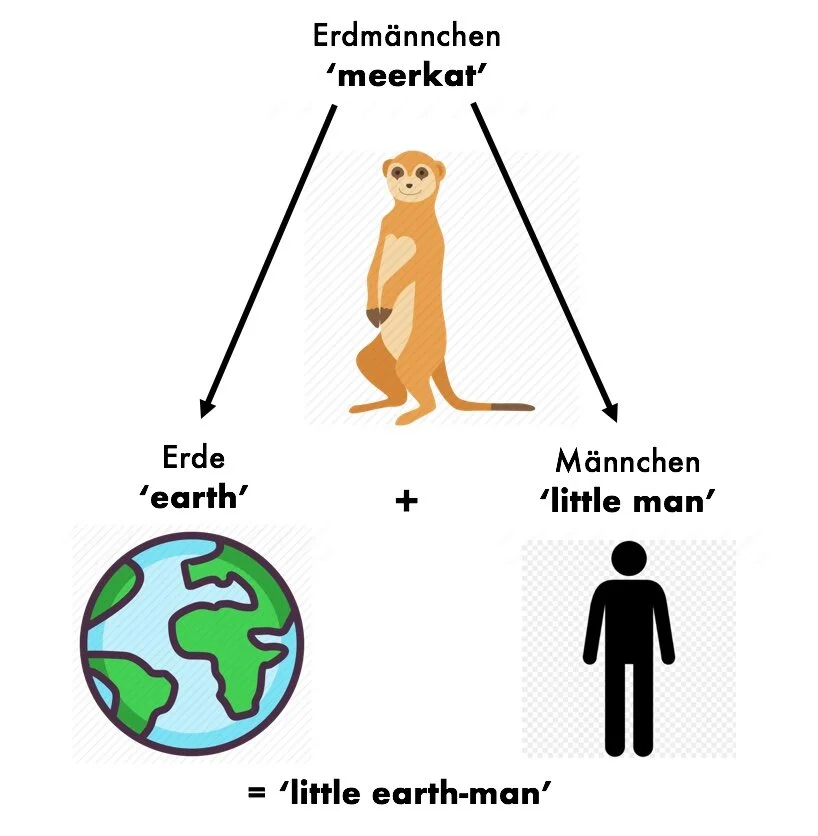Mandaringuistics, Part 4: Spelling R U L E S !
Yuyuan Bazaar, Shanghai, China.
Greetings, Mandarinos!
In this post, we’ll learn a few simple rules to help us (English-background learners of Chinese) pronounce Mandarin correctly from their Pinyin spellings. In our previous post we took a very close look at all of the basic and complex rhymes (that is, the “second half” of a syllable, everything except for an initial consonant); a future post will discuss in detail the sounds and spellings of the Mandarin initial consonants.
1. Spelling of glides
Here the word “glide” refers to the Mandarin sounds yi, yu, wu when their position in the syllable is between the initial consonant and the rest of the rhyme. (English has medial glides as well: contrast “seep” with “sweep”: the former has no medial, and the latter has the medial glide [w] intervening between onset [s] and the rhyme [i:p].)
One of the advantages of Pinyin spelling is that it makes it easy to perceive the syllable structure of compound words, which are written without a space in the romanized spelling. For instance, in the compound word 中文 Zhōngwén ‘Chinese language’, we can tell at a glance that the letter <g> belongs to the first syllable rather than the second, because the following <w> can only occur as the first letter of its syllable. (There’s also the fact that there is no rhyme *-on in Mandarin.) Similarly, in 阿姨 āyí ‘auntie’, the letter <y> tells us that this word has two syllables, and therefore sounds different from the diphthong (double vowel) ai.
Table 1 shows the various Pinyin spellings of the three glides of Mandarin.
Table 1: Pinyin spellings of glide vowels [i y u] according to position within the syllable.
2. Between U&I
There are five triphthong rhymes (consisting of three vowel sounds) in Mandarin, exemplified by 崖 yai 要 yao 外 wai 又 you 位 wei. In the first three, where the main vowel is a, the only change in spelling when an initial consonant is added is the replacement of y with -i (as in 押 yā ‘to sign’ versus 家 jiā ‘home / family’) and of w with -u (as in 挖 wā ‘to dig’ versus 瓜 guā ‘gourd’).
But for those rhymes with the main vowel e/o, a letter is dropped in the spelling when an initial consonant is added to the rhyme. The rule is: between letters U and I, drop a main vowel letter E or O. My slogan for this is “Between U & I”, as the rule applies to either ordering of these two letters, -iou or -uei. Using “C” to stand for any (non-zero) initial consonant, the first step is adjustment of y/i and w/u:
The second step is the deletion of the middle vowel letter. So for example, the word 九 jiǔ ‘nine’ is a perfect rhyme with 有 yǒu ‘to have / exist’, and 水 shuǐ ‘water’ is a perfect rhyme with 尾 wěi ‘tail’.
Note that this apparent deletion is strictly a spelling change--the sound of the rhyme is the same whichever way it is spelled.
3. Drop the Dots
In the Mandaringuistics Rhyme Thyme post (link above), we learned a bit about the Mandarin vowel yu, which has no counterpart in Standard English (though some regional dialects of English do feature this sound, as do many other languages like French and German). To pronounce this vowel, start by pronouncing the sound [i] as in “machine”, and then round your lips while keeping the configuration inside your mouth the same. The IPA symbol for this sound is [y]. If you know how to whistle, you will find that the posture of the tongue and lips associated with [y] is nearly the same as that used for whistling a high note.
If the vowel yu occurs with the initial consonants n- and l-, it is spelled with the letter <Ü/ü> (called “U umlaut”, its German name), as in the words 女 nǚ ‘woman / female’ and 綠 lǜ ‘green’. Here the two dots above the U (the umlaut) are important: they distinguish the vowel sound yu from the sound wu, which is spelled with a plain <u> after an initial consonant. Listen to the vowel sound yu in the words below.
But if the initial consonant added to the vowel yu is one of the palatal series, namely j-, q-, x-, we omit the dots. This is because the vowel wu (IPA [u]) cannot occur in Mandarin in a syllable with these initials. So let’s derive the correct spelling of the syllable ju, as in 居 jū ‘to live / reside’. The first step is the usual adjustment in spelling of the glide yu/ü, followed by the dropping of the two dots:
When pronouncing the syllables starting with the letters ju-, qu-, xu-, and yu-, take care to make these with that [y] vowel ([i] with rounded lips) distinct from the wu sound of all the other C+u syllables bu, du, gu, zhu, zu, and so on.
4. Consonant+Vowel fusion
One unusual feature of Mandarin is that certain vowels seem to disappear when combined with certain consonants. (This is distinct from the fact that certain 2-letter combinations, yi yu wu, denote a single speech sound.) The Mandarin rhyme spelled -i in Pinyin is pronounced as the high front vowel [i] (rhyming with English “see”) after any initial consonant except retroflex zh-, ch-, sh-, r- or dental z-, c-, s-. In these seven cases the sound [i] is not heard. Listen to the vowel sounds of -i after retroflex and dental initial consonants below.
Instead, the vowel sound assimilates (that is, becomes more similar) to the initial: with a retroflex initial, the final -i is pronounced as a retroflex vowel. When a North American English speaker pronounces the word “sure” [ʃɹ̩], with a syllabic R [ɹ̩], this comes pretty close to the sound of Mandarin shi.
With one of the three dental initials listed above, the letter -i takes on the value of [z̩]--that is, the voiced consonant [z] as the nucleus of the syllable. This is the reason that the Wade-Giles romanization system, which predates Pinyin, spelled the Mandarin syllable si as “sze”. This spelling is preserved in the word “Sze-chuan” (a style of cooking, from 四川, the name of one of the Chinese provinces, in Pinyin Sìchuān).
So note that, though the rhyme is spelled the same in syllables like bi, zhi, zi, in fact these three end in distinct vowel sounds. Listen to the distinct vowel sounds in these three syllables:
The fact that the sound (phoneme) /i/ can change to [ɹ̩] and [z̩] is, to me, one of the coolest and most exotic facts about the Mandarin sound system.
5. No 'yawn'-ing
This is a mnemonic phrase I like to use to remind students of how to pronounce the Mandarin rhyme yan (spelled -ian after a non-zero initial consonant). In this phonetic environment, the letter A takes on a value quite distinct from the usual low vowel [a]: it is raised and fronted to [ɛ] as in English “hen”. That is, Mandarin yan sounds much closer to English “yen” than to “yawn” (or to German Jan, French Jeanne). This same change occurs when -an follows the vowel yu: in fact, the English word “yen”, our term for the unit of Chinese and Japanese currency, reflects Mandarin yuán ([ɥɛ̃n˧˥], written 元 or 圓).
The sound of the rhymes yan, yuan is therefore quite close to that of ye, yue, differing only in the weakly articulated final consonant [n]. Listen to the sounds of these rhymes below.
6. E/O with WU, YU and nasal codas
The spellings of these combinations of sounds are the most divergent in the Pinyin writing system. The nasal codas of Mandarin are dental [n] and velar [ŋ]; they are called nasal because when we produce a nasal sound, air flows through the nasal cavity and not just the mouth. “Coda” is a fancy word for the last consonant(s) in a syllable.
When there is no initial consonant, the rhymes in question are spelled (with example characters included for reference):
Note that letter -o- steps in to replace the combination u+e only in the second derivation. When pronouncing this rhyme, the starting point is the high front rounded vowel yu.
But when an initial such as x- or h- is added, the spellings diverge from the ones above:
Here too -o- replaces u+e, not just in the second derivation but in the fourth as well.
There are discrepancies in the sound here as well as in the spelling. Whereas the syllable xun rhymes with yun and xiong rhymes with yong, the ones with medial wu are pronounced one way with a zero initial and another with an initial consonant. Zero-initial wen is pronounced [wən] (quite close to English “one”) and weng is [wʌŋ], while the rhyme of hun is [un] and that of hong is [oŋ] or [uŋ]. Listen to the different vowel sounds in these words.
Conclusion
I hope you’ve found this survey of Pinyin spelling to be useful and helpful. The sound system of Mandarin is to me admirably compact and elegant, and despite its daunting tone system, I think it is much easier for second-language learners to master than English, with its dozen or so vowel phonemes and intimidating clusters (as in “sixths” or “thousandths”) both at the beginnings and ends of words.
The following summary table includes all the rhymes of Mandarin with IPA values and spelling variants shown.
I hope you found this post useful and enjoyable! Please leave us a comment and check us out on social media:
Twitter: @langoinstitute
Instagram: www.instagram.com/LanGoInstitute
Facebook: www.facebook.com/LanGoInstitute
































Tools for helping you master some of the trickier points of German grammar, whether you’re learning it for the first time or wanting to review the fundamentals. Los geht’s!